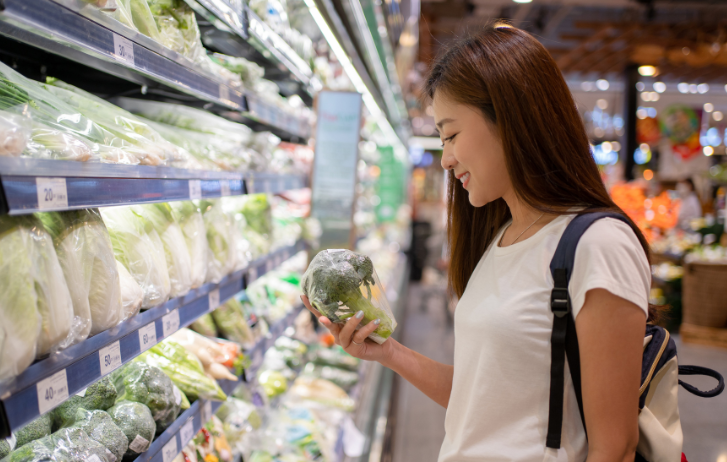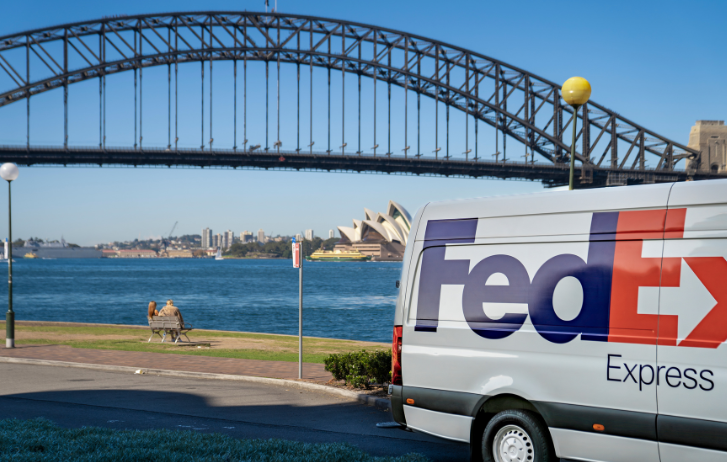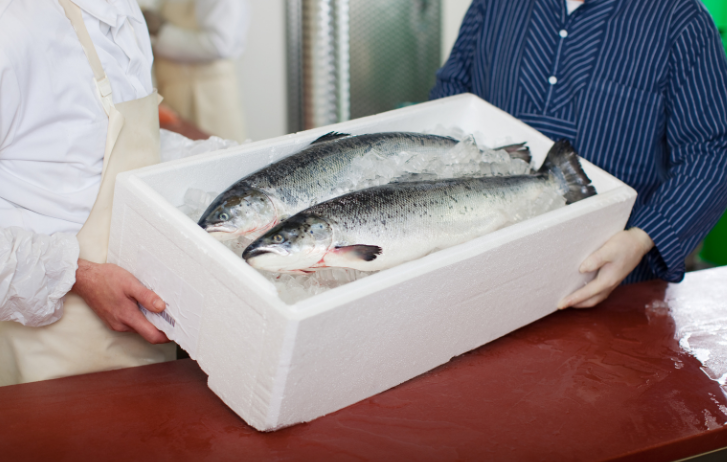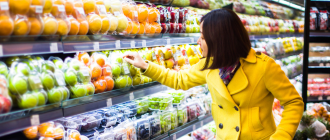
Serving APAC’s Appetite: How Cold Chain Logistics Delivers Freshness
By Kawal Preet | August 15, 2025
Asia Pacific’s appetite for fresh and frozen food is growing fast – and so is the need for smarter cold chain logistics. From rising e-commerce to increasing frozen food exports, explore the trends, technologies, and strategies helping SMEs deliver quality, speed, and compliance.
- APAC’s cold chain logistics market is expected to grow from USD 168.24B to USD 253.92B by 2030, driven by rising e-commerce and premium food demand.
- The APAC food e-commerce market (which includes fresh, frozen, and shelf-stable food) is projected to hit USD 635.44B by 2029, accelerating investment in cold chain infrastructure and last-mile delivery.
- SMEs are leveraging cold chain transportation, shared infrastructure, and IoT tech to scale exports and ensure product integrity.
At any supermarket in Asia today, it's common to find Chilean blueberries, Norwegian salmon, Korean kimchi, and Australian Wagyu – all carefully chilled, frozen, or vacuum-packed to preserve their freshness.
For consumers, this variety is both convenient and expected. For small and medium-sized enterprises (SMEs), however, getting products from source to shelf in perfect condition is a complex logistical challenge.
Whether chilled or frozen, maintaining the right conditions is essential to ensure safety, shelf life, and flavor integrity. So, what is temperature-controlled logistics and how does it work in today’s economy? At its core, cold chain logistics involves maintaining a precise temperature range throughout the product journey, from warehouse to doorstep, from farm to fork.
Today, businesses of all sizes are increasingly relying on it to meet higher quality expectations, expand across borders, and reduce waste. For SMEs, getting temperature-controlled logistics right can open new markets, improve customer satisfaction, and sharpen their competitive edge.
Rising demand, rising expectations
From high-end perishables to everyday essentials, the rise of e-groceries, specialty exports, and cross-border retail is driving the surge in cold chain logistics. Currently estimated at USD 168.24 billion, the cold chain logistics market in APAC is expected to reach USD 253.92 billion by 2030, growing at a CAGR of 8.58%.
Rising incomes and a growing middle class are reshaping dietary preferences. Urban consumers are prioritizing health and spending more on premium dairy, meat, and seafood. The chilled segment dominates the Asia-Pacific cold chain logistics market, commanding about 68% of the total market share in 2024, reflecting a strong preference for fresh over frozen.
Protein-rich diets, demand for year-round seasonal produce, and the popularity of global cuisines are all contributing to this shift. For instance, ASEAN’s Muslim population is driving the halal food industry, now worth USD 2 trillion worldwide.
At the same time, digital commerce is transforming cold chain expectations. Fueled by rising consumer demand for convenience and increased online shopping habits, the food e-commerce market in APAC (which includes fresh, frozen, and shelf-stable food) is projected to reach USD 635.44 billion by 2029, with an estimated user penetration rate of 37.6%.
Consumers also expect fresh produce to be delivered fast. This explosion of quick commerce is further compressing fulfillment timelines and placing unprecedented pressure on cold chain infrastructure to deliver at scale and speed.
Rising temperatures, new pressures
SMEs across Southeast Asia, from Vietnam to Thailand and Indonesia, are strengthening their frozen food export capabilities to cater to high-demand markets in China and the Middle East. Exports of seafood, fruit, and plant-based foods from the region are all on the rise. For example, Vietnam is the world's third largest seafood exporter, trailing only China and Norway, accounting for over 7% of the global market share.
Urbanization is adding another layer of complexity. With over half of Asia’s population set to reside in cities by 2030, cold chain demand will increasingly concentrate in dense urban areas, where last-mile efficiency and cold storage space are critical.
Meanwhile, climate volatility is intensifying spoilage risks. In tropical and subtropical climates such as Indonesia and the Philippines, high heat and extreme weather events have made temperature-controlled logistics not just a differentiator but a necessary safeguard to ensure food safety and quality.
What businesses need to compete in cold chain logistics
For many, cold chain for SMEs means handling a complex ecosystem of storage, transportation, and compliance. The key is to understand what’s essential and how to build capabilities through partnerships and technology. Here’s what businesses need to compete in cold chain logistics.
1. Use technology to improve end-to-end visibility
Cold-sensitive goods must be monitored, not just moved. Today’s regulations require near-real-time temperature logs and sealed control points, especially for food and fresh produce.
Near-real-time temperature monitoring, Internet of Things (IoT) sensors, and GPS tracking are now more accessible and affordable. These tools help SMEs ensure that shipments stay within the right temperature range throughout the journey, reducing the risk of spoilage or customer complaints.
With IoT-based solutions like FedEx SenseAware ID (a lightweight sensor that transmits precise package location data every two seconds, and is available as part of our FedEx Surround Premium and FedEx Priority Alert services), shippers can monitor perishables across long-haul journeys and respond proactively to any anomalies.
2. Leverage shared cold chain infrastructure
For SMEs, entering this space doesn’t require massive infrastructure outlay. Scalable partnerships are key. Instead of investing in costly standalone warehouses or vehicle fleets, many SMEs work with third-party logistics providers like FedEx that offer cold storage solutions and delivery.
Shared warehousing, flexible cold chain transportation, and access to regional distribution hubs allow smaller businesses to operate with the same reliability as larger players – without the overhead. FedEx, for instance, offers temperature-controlled shipping services and access to international cold chain networks that help SMEs scale quickly without compromising quality.
3. Understand and comply with regulations
As cold chain logistics expands, so do compliance requirements. Food products may need to meet certification standards such as HACCP, ISO 22000, or country-specific guidelines. Navigating export requirements and food safety regulations, especially on how to transport frozen food internationally, demands deep cross-border experience.
SMEs that adopt proper handling practices and maintain documentation reduce risks of delays or product rejections. With FedEx Trade Solutions, businesses can access a wide range of expert-led services to help them navigate evolving trade regulations, especially when shipping from Asia Pacific to the US.
4. Plan for sustainable growth
Sustainability is becoming a major concern in temperature-controlled logistics due to the energy-intensive nature of refrigeration and transportation. Emerging sustainable cooling solutions are gaining traction across Asia. Electric delivery vehicles are also becoming more accessible and cost-effective. At FedEx, we are actively expanding our EV fleet across Asia-Pacific to reduce our carbon footprint.
In Singapore and Malaysia, incentive programs (such as tax incentives for carbon capture and storage and refundable tax credits) are also supporting green tech adoption, helping businesses reduce long-term costs. Businesses that prioritize low-carbon operations will not only align with regulatory shifts but also appeal to eco-conscious consumers.
Cold chain trends to watch
Looking to the future, several trends will shape the way SMEs engage with cold chain logistics in APAC:
AI and predictive analytics: Advanced platforms are set to optimize delivery routes in near-real time, anticipate temperature deviations, and prevent spoilage before it happens. These technologies will help both large distributors and local grocers make faster, more informed decisions.
Urban micro-fulfillment: Hyperlocal cold storage hubs in dense city centers will enable faster fulfillment. These compact, strategically located facilities allow retailers and restaurants to deliver fresh and frozen items within minutes, not hours.
Blockchain and transparency: Consumers increasingly want to know where their food comes from and how it was handled along the way. Technologies like blockchain and digital traceability platforms can provide real-time proof of origin and handling conditions, building trust and reinforcing brand loyalty.
Cold chain logistics is becoming a central pillar of APAC’s food systems. As consumers demand freshness, speed, and transparency, the need for reliable temperature control throughout the supply chain is more urgent than ever. The winners in this space will be those who can harness innovation, resilience, and collaboration – delivering not just food, but trust and quality across every link of the cold chain.
SHARE THIS STORY
- Generative AI: A New Frontier
- How To Ship A Giant Panda
- How To Make Freight Shipments Work For Your Small Business
- The Rise Of Intra-Asia Trade: Opportunities In The China-Southeast Asia Corridor
- Where Do Old Planes Go When They Retire?
- What’s So Dangerous About Coconuts? Your Guide To Dangerous Goods Logistics
Sign up now and save on your shipping rates!
Sign up now and earn discounts by shipping instantly with FedEx Ship ManagerTM at fedex.com.
Recommended For You

Cross-Border E-Commerce In China Surges With Regional Cities’ Export Boom
Explore how cross-border e-commerce in China is growing fast, driven by smart logistics and regional cities. See how your business can benefit.
Read More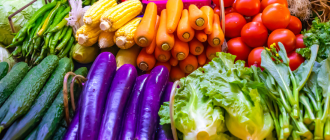
A Billion-Ton Mega-Industry: The Skyrocketing Value Of China’s Perishable Imports
Learn how China's rising demand for premium fresh produce creates opportunities for global exporters, backed by a robust cold-chain logistics network.
Read More
How To Keep Your High-Value Shipments Safe And Secure
Here’s how your business can prevent costly damage and ensure safe, on-time delivery.
Read More
